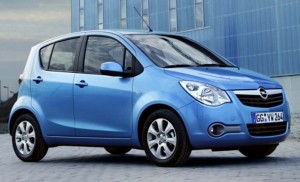General Motors is shifting its strategy in one of the world’s top emerging markets, Russia, to create some new pace for its Opel, the cornerstone of its ailing European operations.
Russia is viewed by many automakers as key market in the future, including GM, Ford, Daimler and Volkswagen as well as Hyundai and Toyota. Additionally, Russia’s largest automaker, AutoVaz and its strategic partner, are also looking to expand. Bo Andersson, a former GM executive, was recently promoted to become AutoVaz’s first non-Russian chief executive.
For the past decade, GM has made Russia, a target market for its aggressive global expansion of the Chevrolet brand. Chevrolet, according to GM, has now delivered 12 straight quarters of record growth as GM has pushed ahead with its plans for Chevrolet.
Selling more Chevrolets has been the principal goal of GM’s Russian operation. The company sold 48,000 Chevrolets in Russia during the third quarter, according to GM. The maker has also made Russia a target market for the Cadillac brand.
The drive to promote Chevrolet, however, left the Opel brand on the company’s back burner not only in Russia but also across the countries in Eastern and Central Europe that once were part of the Soviet bloc where Opel had a history that reached all the way back to 1920.
GM, however, has announced a course correction that will put more emphasis on Opel in Russia in the future and create more growth opportunities for the Opel brand, which has seen its market share in its traditional base in Western Europe shrink.
In addition, GM’s business in Russia will be integrated into GM Europe, the European group of GM, effective Jan. 1, 2014. Prior to that it was part of GM International Operations (GMIO) based in Shanghai. GMIO played a critical role in sidetrack Opel’s efforts to establish a foothold in China, which is now apportioned to Chevrolet and Buick.
It is an important step to strengthen the position of Opel in the Russian market, GM officials said. In the past, GM insisted Chevrolet and Opel could co-exist in Europe and emerging markets, such as Russia. Opel could clearly be the upmarket choice for buyers while Chevrolet appealed to economy and first-time buyers.
“This is the right decision at the right time. Russia is an important part of the European market and for Opel it is the third biggest market in Europe,” says Dr. Karl-Thomas Neumann, chairman of Opel/Vauxhall and President, GM Europe.
“All forecasts point out that Russia will become the biggest market in Europe in the next (few) years. Opel enjoys a high reputation in Russia. With our strong model portfolio we want to clearly increase our market share.”
GM brands in Russia are Opel, Chevrolet and Cadillac.
(Toyota to send U.S.-built Venzas to Russia. For more, Click Here.)
Andy Dunstan, until now Executive Director Sales Central & Eastern Europe and International Operations, will take over the management of the business in Russia effective Nov. 1. Dunstan, who brings valuable experiences from Product Planning, Marketing, Business Development and Sales, will report to Neumann. Dunstan follows Jim Bovenzi, who is moving to Detroit as Executive Director Global Localization Strategy.
Meanwhile, GM’s rivals are also stepping up their activity. The Ford Sollers joint venture will begin production of a small SUV in 2014 at its Naberezhnye Chelny Assembly plant. The Naberezhnye Chelny plant will be Ford Sollers’ second assembly plant in Tatartsan, Russia, and third overall plant in Russia.
(Click Here for more about Datsun’s “glocal” strategy.)
Based on the expanded production of Ford vehicles in Russia, the total number plant employees in Tartarstan will increase 500 by the end of this year to 2,500 total.
Ford has also been asking suppliers to open plants in Russia, according to Karl Krause, chief executive officer of Kiekert AG, one of the world’s largest supplier of door latches.


Well, that ought to “Spark” Opel’s sales prospects.